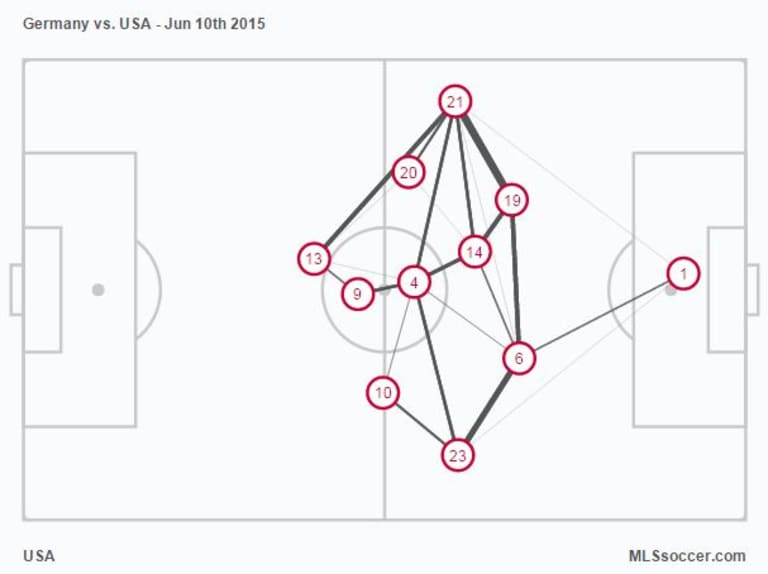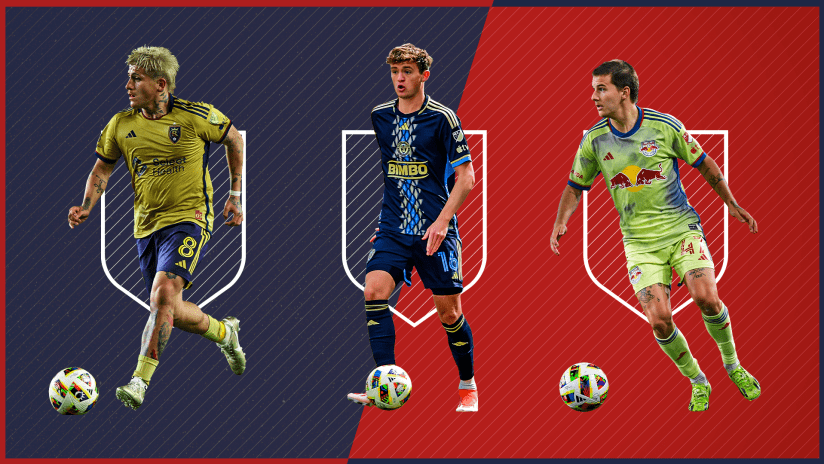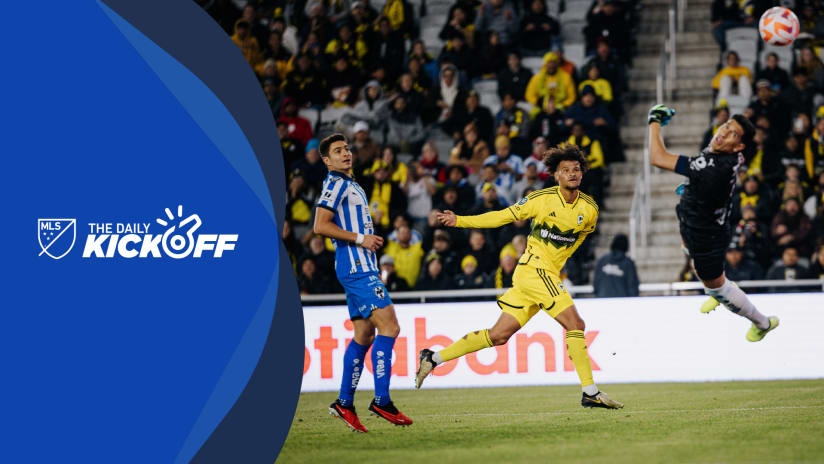This is my mantra: The most important thing you can do as a soccer coach is to play your best player in his best spot. Then build from there.
It's no longer debateable that Michael Bradley is the best USMNT player, not after he ran both the Netherlands and Germany to death over the past five days. And it's no longer debateable what his best spot is.
He is a box-to-box central midfielder with primary distributive and creative duties. This is the spot he played in the second half against Slovenia way back in the 2010 World Cup, with Mo Edu playing as a true No. 6 behind him. This is the spot he played in the run-up to last year's World Cup, and this is the spot he's played each of the last two games out.
Against Holland it was a 4-3-3, and against Germany it was a 4-1-3-2, and while I do think the formation matters – I'm partial to the 4-1-3-2 – what matters more is putting your best players in the spots where they have the best chance at success, and then building around that. In Brazil, Jurgen Klinsmann went against that formula, pushing Bradley into an advanced role with only one attacking target to pick out.
This year, the US are giving him multiple runners and are being rewarded with multiple goals.
Klinsmann has hit upon that right mix, and I've convinced myself he'll stick with it following Wednesday's 2-1 win over Germany in Cologne.
A few other thoughts from what was – friendly or not – a truly great win:
1. It's Not A Diamond
We need to stop calling it a "diamond" midfield, because it's not. In the diamond the main playmaker – the No. 10, the "point of the diamond" – tends to play just underneath the two forwards, and has limited responsibilities in terms of tracking back or playing the ball out of his own end. Also, the point of the diamond plays higher than the wide players, usually referred to as shuttlers.
This is not how the US lines up. Bradley is the main playmaker, but he doesn't do it by staying high, keeping the US shape and waiting for the ball. He's always seeking the ball, and always doing a ton of tracking on defense. This allows both the shuttlers to play higher:

That's the network passing graph from the first half. It's not a diamond; it's a structure with one central midfielder (Danny Williams, No. 14) protecting the other (Bradley, No. 4) and letting him run around like a rocketized version of Gozer the Destructor:
Michael Bradley jigs Bastian Schweinsteiger almost out of his shoes with the fine stop & start ankle breaker. pic.twitter.com/IkRUORp9EO
— Andrew Jerell Jones (@sluggahjells) June 10, 2015It's a 4-1-3-2 with the key to the whole thing being that the guy in the middle of the "3" line – Bradley – is free to run anywhere he wants. And the rest of the team adjusts to that.
And I love it. I wish we'd played it last year in Brazil.
2. A Truly Great Goal
Somehow I counted 35 passes the first time I watched this sequence, but it turns out it was only 30. The lesson: Never trust the math of someone with an English degree, and always trust Paul Carr:
The highlight that's up on Youtube via U.S. Soccer (watch HERE) doesn't quite do it justice, since it only has the last two passes of the sequence. But this is one of the best goals the US has ever scored.
Obviously the patience is great, as is the final ball from (who else?) Bradley. But Mix Diskerud's run there is something he hasn't really shown before. He's not a north-south attacker, but usually acts as more of a ball-circulator or occasional playmaker.
This time he saw the opening, with Germany's right back tucked inside, and hit it hard. This bodes well not only for the US, but for NYCFC – since Diskerud is likely to play that shuttler role once Frank Lampard arrives.
3. Possession With Purpose
I've pointed out a couple of long build-ups that happened in MLS this year, and part of the response has been "yeah sure, but only three or four of those passes were in the attacking third! It's not like they're Barcelona!"
It's meant as an insult, but it actually points out an important tactical point: Both the USMNT and most MLS teams that value the ball are much, much more dangerous when attacking from deeper. We're not going to win by trying to play like Barcelona, and the Sounders aren't, and Toronto FC aren't, etc. etc. etc.
You have to play to your players' strengths, and in that sense, this is the type of passing statline you should expect to see from the US against the very best teams:
Germany had about twice as many passes in the attacking half, and about twice as many in the attacking third. But does anybody really think that they controlled the game?
And more to the point is the fact that the telling pass for both US goals – Diskerud's and Bobby Wood's, and sure, I'll embed it...
... came from just past the midfield stripe.
Yeah, it's not Barcelona. The US hold the ball much, much deeper, and are increasingly adept at finding runners both in and through the gaps. Or, obviously, over the top.
That's the US identity right now, and it's a hell of a lot of fun to watch. But be forewarned: CONCACAF teams won't allow the kinds of gaps that Holland and Germany did. This isn't to say that CONCACAF teams are better (I'm not certifiable), just that they will sit deeper, try to draw the US further forward, and make it a different kind of game than the one we just saw.
We won't see an open game like today's until and unless we play Mexico. And if we do play them, given how good we've looked our last few times out... well, you know how the chant goes.
A few more thoughts that I couldn't work in:
- Timmy Chandler was awful on the goal, but had a very good last 60 minutes. I don't know what this means.
- DeAndre Yedlin was uncontainable at right wing when he came on. Interestingly, the right side of Yedlin at midfield and Brad Evans at right back is the inverse of what Sigi Schmid used for Seattle last year.
- I was a fan of Bobby Wood before it was cool. I swear it!
- Jordan Morris's dummy was right out of the Jozy Altidore playbook.













